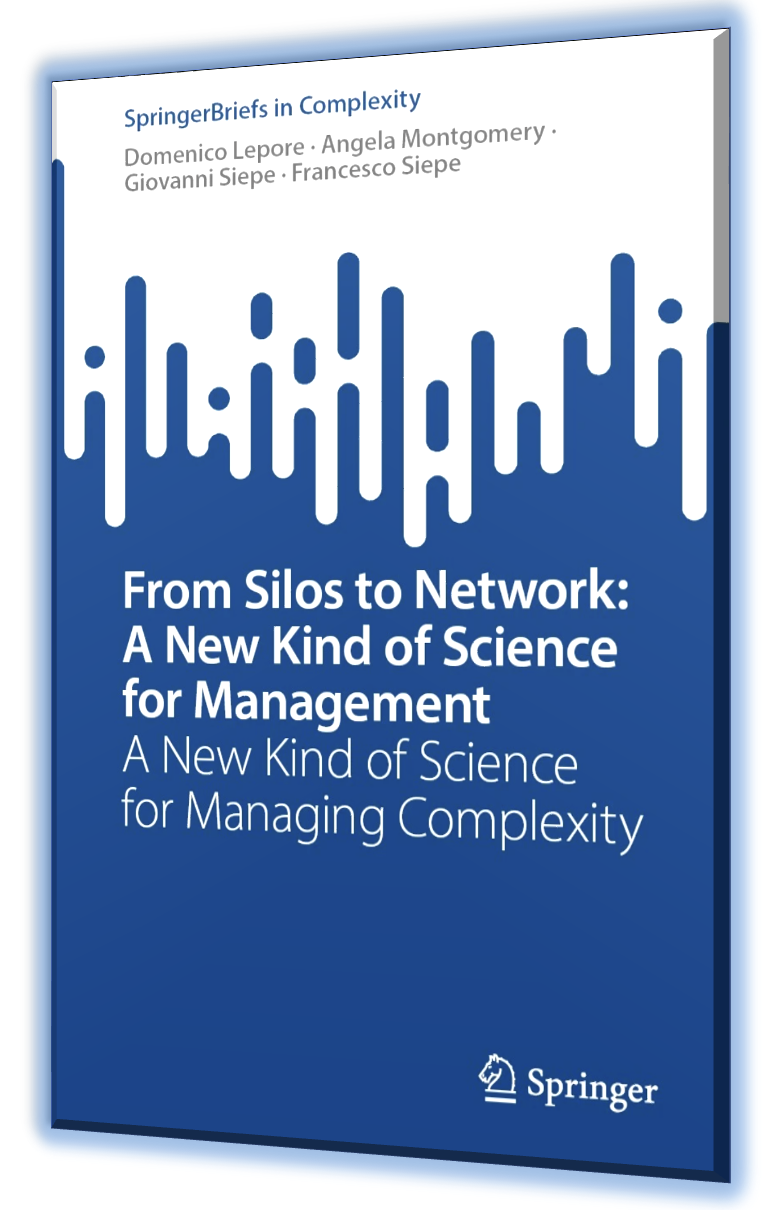
Making the best use of the resources we have in a sustainable way was always necessary, but it became dramatically evident and urgent following the Coronavirus crisis. The lockdowns that forced organizations to carry on working outside their normal locations accelerated a major change that was already taking place – the shift towards digital and decentralized work. Companies must urgently rethink, structurally and operationally, how they can adapt and compete in an increasingly digital and decentralized market. (This is the major theme of our 2019 book ‘Moving the Chains: An Operational Solution for Embracing Complexity’).
In the mid 2000s, once it became clear to us that the major obstacle for an organization to realize the full potential of all its resources was the prevailing hierarchical/functional style of organization, our focus shifted to finding an operational solution involving network science. We perceived that a network-based approach to the organization of industry, healthcare, government and education was the natural offspring of a systems view of the world epitomized by the work of Dr. Deming. Network science could act as a catalyst for embedding the systems view into a practical way of operating that allows all the resources available, human and otherwise, to express their potential towards achieving the goal of sustainable growth.
Understanding an organization or a value chain as a complex, oriented network opens up new and unprecedented possibilities for collaboration and sustainable prosperity.
We were aided in this understanding by framing the problem of organizing work in a way that is effective for the 21st century as an “inherent conflict”. Companies must protect two fundamental needs: individual accountability and growth. The need for individual accountability will prompt them to adopt a traditional hierarchical/functional structure with its resulting silos, whereas the need to grow will prompt them NOT to adopt a traditional hierarchical/functional structure. This conflict creates a situation of blockage that keeps organizations stuck in a reality where they are unable to achieve their potential. We came to realize that the way out of this conflict was not to impose any artificial new structure but to acknowledge that an organization is intrinsically:
(a) A network
(b) Part of a larger network of value
So, if organizations are intrinsically networks, how can we operate and manage them as such? Managing an organization as a network entails foregoing a command and control management style but at the same time requires a powerful mechanism to ensure that activities are properly coordinated and synchronized and that everybody in the network is accountable.
To find a suitable organizational structure we first have to take a look at the fundamental elements that make up the work of an organization. Just as the key constituents of life are hydrogen, oxygen, carbon and nitrogen, we can say that the basic constituents of work are repetitive processes and one-off projects.
With this realization, a new organizational model emerges that is based on the management of a complex, strongly interconnected and synchronized network of projects. We call it the Network of Projects organization design.
What propels the performance of such a network are highly reliable, low variation processes and a finite capacity-based algorithm that allows a realistic allocation of available resources from a pool of competencies. This requires a complete shift from a “mechanistic” mindset to a systemic one to overcome the command and control management style in favor of whole system optimization.
Managing organizations as networks of projects is a highly effective way to equip them structurally, operationally, and cognitively to optimize their interactions with larger networks of value through digital and decentralized transactions.
Other articles in this ‘Out of the Crisis’ series:
Part 1: A Serious Knowledge Gap Affecting Leaders and Executives
Part 2: What’s Wrong with Organizational Structures?
Part 3: Viral Insights from Managing Variation and Constraints
Part 4: How to Manage Decentralized Work
Part 5: Learning to Think Systemically to Make Informed Decisions and Pre-empt a Crisis
Part 6: Identifying Assumptions to Unlock Innovation and Move Beyond the Crisis
Part 7 A New Economics for Sustainable Prosperity
Contact: intelligentmanagement@sechel.ws
SCHEDULE AN INTRODUCTORY CALL WITH US






Leave a Reply